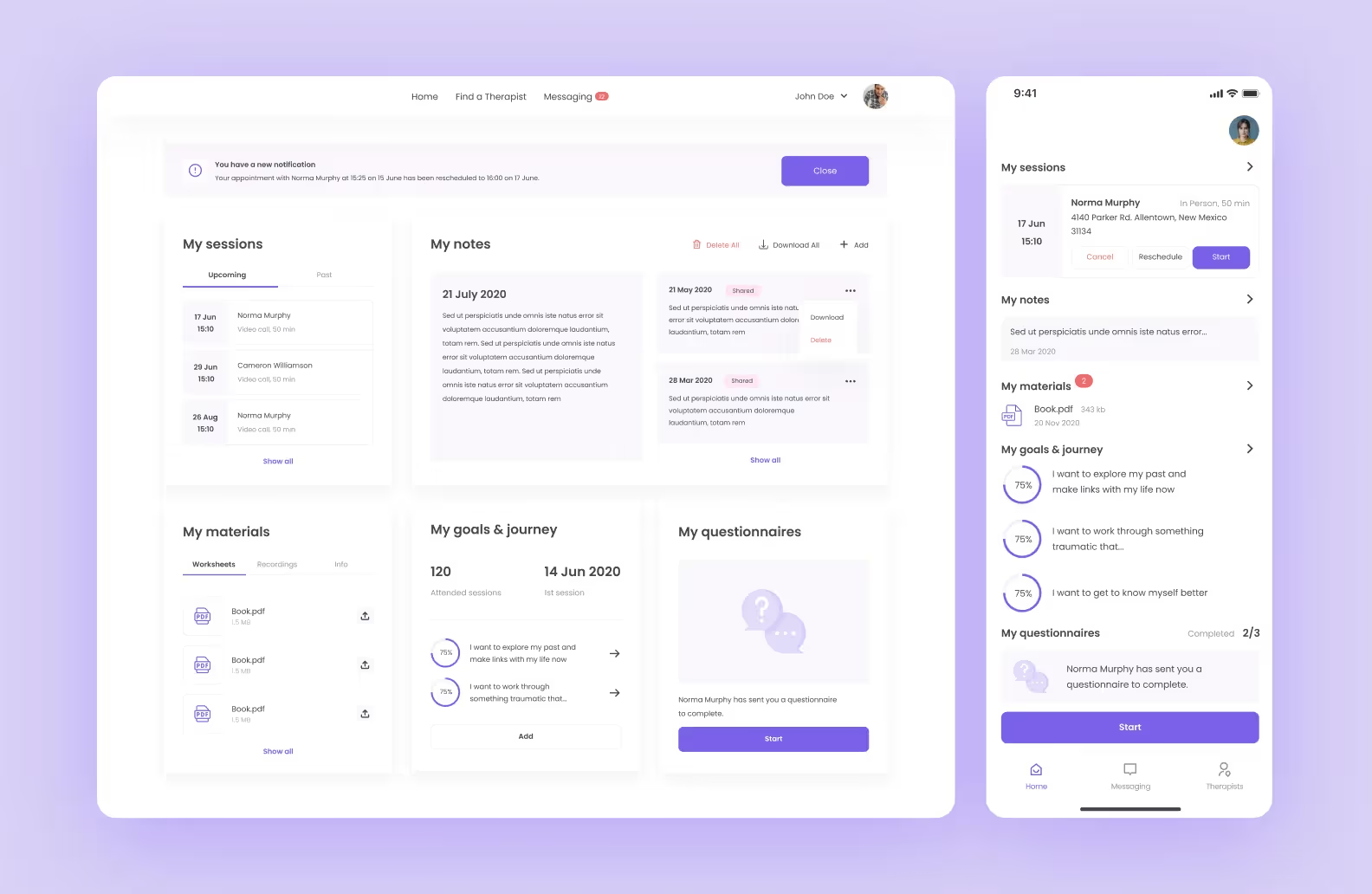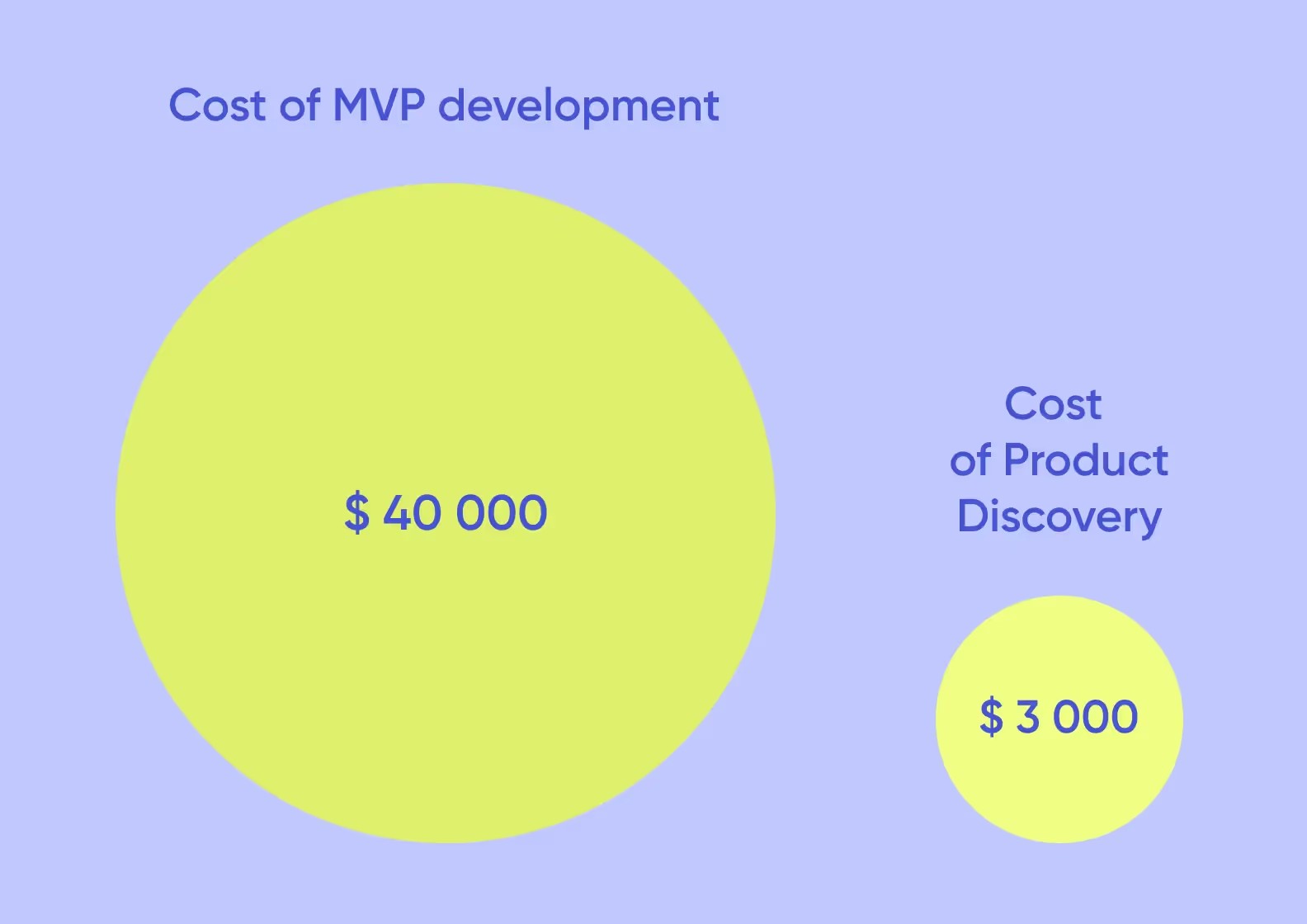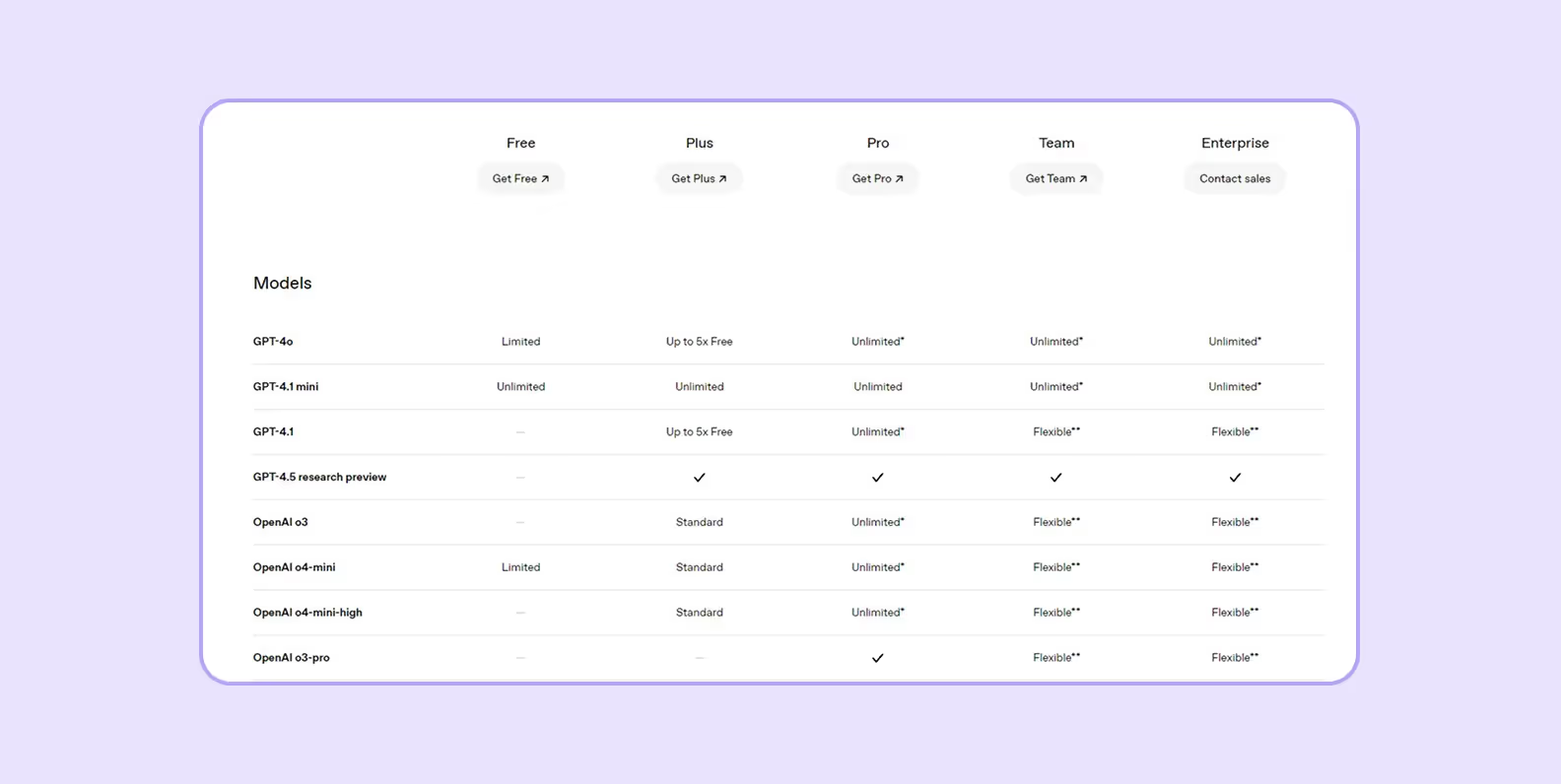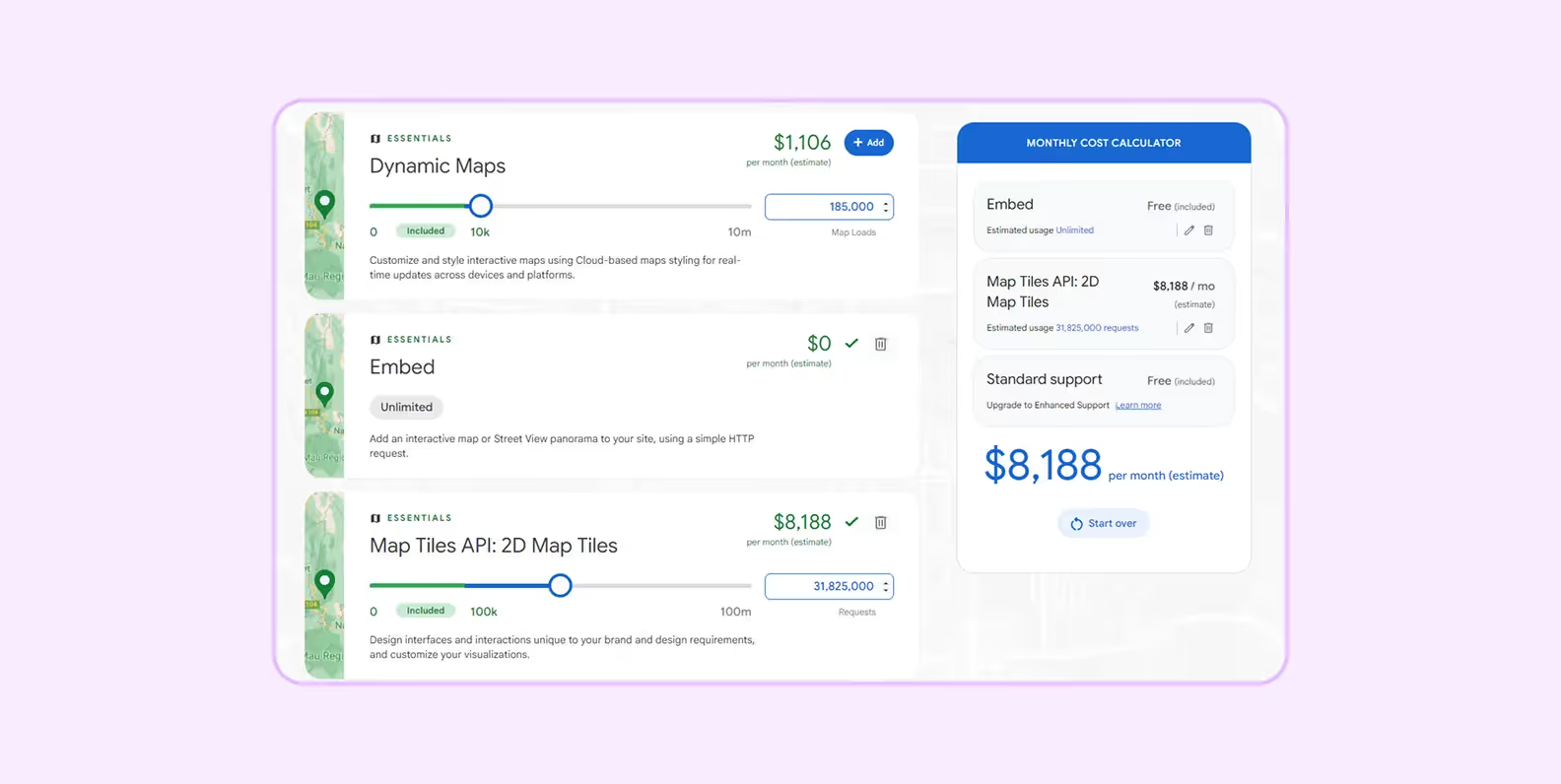


AI software development is a significant investment that requires careful planning and strategic decision-making. Many underestimate the true costs involved and overlook critical factors that influence both development expenses and potential returns.
In this article, we’ll break down what really affects AI development costs — from team composition and data requirements to technology choices and hidden expenses.
We’ll also explore how different AI technologies impact investments and examine monetization models that can transform an AI application.
.avif)
The investment in AI applications continues to grow substantially. According to Statista, the global AI market is experiencing explosive growth, expected to exceed $1 trillion by 2031.
This expansion reflects how industries are prioritizing AI use despite significant development costs. They typically range from $25,000 for basic solutions to over $600,000 for advanced systems.
Building AI software isn’t a fixed-price. Multiple variables influence the final price tag, and here are the six primary elements that determine how much investment an AI project will need.
AI applications that use standard algorithms and pre-trained models typically cost less to develop. These are basic chatbots or product recommendation engines that operate with limited inputs and produce predictable outputs.
In contrast, complex AI solutions requiring custom algorithms and extensive model training demand substantially higher investments.
The functional scope also matters. An AI that only classifies customer feedback is simpler than one that analyzes feedback, generates responses, and routes issues to appropriate departments.
The composition of your AI development team substantially influences project costs. A typical AI project team includes:

Specialists with extensive AI expertise command premium salaries — experienced AI engineers and data scientists can cost 30-50% more than traditional software developers.
Location also matters significantly; AI talent in North America and Western Europe typically costs 2-3 times more than equivalent expertise in Eastern Europe or Asia.
When high-quality, relevant data already exists in usable formats, development costs remain manageable. However, most projects face significant data challenges.
Teams often need to build custom datasets through web scraping, sensor networks, or manual creation methods. This collected data then requires thorough cleaning to eliminate errors, duplicates, and outliers. Additional techniques like data augmentation help create more robust models by expanding the training examples.
Data labeling deserves special attention, as it’s frequently underestimated. Complex projects may require domain experts (like medical professionals for healthcare AI) to label data, dramatically increasing costs.
For many AI projects, data preparation consumes 60-80% of the total development time and resources, making it one of the most significant cost factors.
The choice of technologies will also impact development costs.

While open-source tools might seem most economical initially, they often require more development time and specialized knowledge. Cloud-based AI services reduce development complexity but introduce ongoing operational costs that scale with usage.
Few AI applications exist in isolation. Most need to connect with existing enterprise systems, databases, APIs, and user interfaces, which influences development costs.
Legacy systems need custom connectors and extensive software testing, while real-time processing demands additional infrastructure. Security concerns grow when connecting to sensitive systems, and data format transformations between different technologies add further complexity.
Integration testing also adds significant time and expense, as AI systems must be verified to work correctly with all connected systems under various conditions and edge cases.
AI systems aren’t “set and forget” solutions — they require continuous maintenance and periodic retraining. You will need to set monitoring for detecting performance degradation and conduct regular retraining with new data to prevent model drift.
As usage grows, infrastructure scaling becomes necessary, alongside ongoing bug fixes and system updates to adapt to changing business requirements.
Beyond the obvious expenses, AI projects hide several less visible costs that can significantly impact your budget and timeline.
Machine learning models require substantial computing resources during training phases, particularly for complex deep learning models. GPU/TPU instances for training large models can cost thousands of dollars per week.
Additionally, fine-tuning to achieve the last few percentage points of accuracy often demands disproportionate resources compared to initial training.
Most AI applications run on cloud platforms with usage-based pricing models. As your application scales, infrastructure costs grow accordingly — sometimes exponentially.
High-throughput systems processing millions of requests can generate substantial API costs. Real-time applications requiring low latency demand premium infrastructure options with higher price tags.
Protecting sensitive data and ensuring regulatory compliance introduces significant expenses, especially in highly regulated industries. These costs include specialized security audits, encryption implementation, compliance documentation, and potentially expensive certification processes for GDPR, HIPAA, or financial regulations.
<div class="post_divider"></div>
⭐ Our experience
My Therapy Assistant is an online psychotherapy platform that we developed for our client. To ensure healthcare data protection regulations compliance, we set up secure authentication protocols via Auth0 and SendGrid for user verification.
The app’s administrative dashboard allows proper monitoring of patient data while maintaining confidentiality standards required by both HIPAA and GDPR frameworks.
Despite technical challenges with third-party integrations, we prioritized security compliance throughout the development process.

<div class="post_divider"></div>
AI development rarely follows a linear path. Models frequently underperform in production environments, requiring additional iterations and sometimes complete rethinking of approaches.
Each major iteration cycle introduces new development, testing, and validation costs that weren’t accounted for in initial estimates.
AI models degrade over time as real-world data patterns change — a phenomenon called “model drift.” Implementing systems to detect and correct this drift requires continuous monitoring, periodic retraining, and sometimes manual intervention.
Different AI capabilities require varying levels of expertise, computational resources, and development time, directly impacting your project budget. Here’s a quick overview of the most popular AI technologies in mobile app development and their costs:
NLP enables applications to understand, interpret, and generate human language. Development complexity varies significantly based on the specific capabilities needed:
The primary cost drivers include training data preparation, algorithm development, and integration complexity. For applications requiring multiple languages, costs increase roughly 20-30% per additional language due to language-specific training and tuning requirements.
Computer vision applications process and interpret visual information from the world, requiring specialized expertise and substantial computing resources:
These projects demand extensive labeled image datasets, often requiring manual annotation that can constitute 30-40% of total project costs. The computational demands for training vision models also exceed most other AI technologies, particularly for real-time applications.
Generative AI creates new content like text, images, code, or audio, representing one of the most resource-intensive AI technologies:
These applications require enormous training datasets and exceptional computing resources during development. Training a custom large language model from scratch can cost hundreds of thousands in computing resources alone.
Predictive analytics applies statistical algorithms to historical data to forecast future outcomes:
These applications generally require less computational power than technologies like computer vision or NLP but demand more domain expertise and data preparation.
Recommendation engines suggest relevant items or content to users based on behavior patterns:
Development costs vary based on the sophistication of the recommendation algorithm and the volume of user data processed. Recommendation systems require continuous refinement based on user feedback. This makes ongoing improvement costs a significant consideration beyond initial development.
Speech recognition converts spoken language to text, while voice assistants process commands and respond accordingly:
These applications require extensive audio training data covering different accents, speaking styles, and acoustic environments. Achieving high accuracy in noisy environments or with domain-specific terminology significantly increases development costs.
Anomaly detection identifies unusual patterns that deviate from expected behavior:
These systems generally require less training data than other AI technologies but demand significant domain expertise to correctly identify meaningful anomalies versus acceptable variations.
False positives and false negatives both carry costs, making extensive testing and validation a substantial portion of the development budget.
These practical approaches help maximize AI investment without compromising on quality or capabilities – focusing on efficiency rather than cutting corners.
Begin with precisely defined business objectives rather than vague aspirations to “use AI.” Identify specific metrics for success and the minimum viable AI capabilities needed to achieve them. This focused approach prevents scope creep and ensures development resources target only features with tangible business value.
A proper discovery phase also helps validate assumptions before committing significant resources, ensuring your AI project solves real problems that users are willing to pay for.
<div class="post_divider"></div>
⭐ Our experience
We helped a client who wanted to develop an AI dating app that would help users get more matches and improve conversations. Before jumping into development, the client asked for a thorough discovery phase costing just $3,000.
Through user interviews and surveys, we discovered the target audience (men in the USA) didn’t actually struggle with the problems the AI was meant to solve. They were generally comfortable writing messages and weren’t concerned about low match rates.
The discovery phase revealed no market demand for the proposed AI features, saving the client approximately $40,000 in development costs for an app that would have likely failed. Instead of seeing this as a failure, the client gained valuable market insights and could explore alternative opportunities that better addressed actual user needs.

<div class="post_divider"></div>
Services like OpenAI’s GPT, Google’s Vision API, or Amazon Rekognition provide sophisticated AI capabilities with minimal development overhead. Fine-tuning these pre-built AI models for your specific needs typically costs 60-80% less than developing custom models from the ground up.
<div class="post_divider"></div>
⭐ Our experience
We developed a business reporting service for a client who needed to simplify the creation of non-financial reports. Instead of building custom AI capabilities from scratch, we integrated ChatGPT to help users generate report content.
The development team enhanced the basic integration by adding a custom feature that automatically fed the AI relevant contextual information alongside user requests. This improved response accuracy even when users provided incomplete information.
This approach not only reduced development costs but also improved the end product by using the capabilities of an AI model that would have been expensive to develop independently.

<div class="post_divider"></div>
In-house AI development requires significant investment in recruitment, training, and retention of specialized talent that commands premium salaries. Outsourcing offers: immediate access to experienced AI specialists, elimination of hiring costs, flexibility to scale resources as needed, and no long-term commitment to maintaining an AI department.
External teams also bring diverse project experience and established workflows that prevent costly development missteps. Our team combines technical proficiency in various AI technologies with business-oriented thinking. This ensures solutions address actual business problems rather than pursuing technology for its own sake.
Start with a minimum viable product, focusing on core functionality before expanding to advanced features. This approach allows you to validate business ideas with minimal initial investment and gather real-world feedback to guide further development.
Early user testing with an MVP often reveals that simpler AI implementations satisfy business requirements, eliminating the need for the more expensive, complex features originally planned.
Avoid overengineering your AI solution. The simplest model that meets your performance requirements is almost always the most cost-effective option.
Complex models increase development costs, require more computing resources, and introduce additional maintenance challenges. Instead, focus on data quality improvement, which typically shows better results than increasingly sophisticated algorithms for most business applications.
Build maintenance considerations into the initial development plan rather than treating them as an afterthought. Implementing proper monitoring, logging, and update mechanisms during development costs significantly less than retrofitting them later.
Design the system for efficient retraining and updating, ensuring maintenance doesn’t become a runaway expense that undermines original cost savings.
The right monetization strategy can deliver substantial returns. Finding the right approach depends on your application type, target audience, and the nature of value your AI delivers to users. Here are four most common ways to generate income from an AI app:
Monthly or annual subscription models provide predictable recurring revenue for AI applications. This approach works particularly well for business tools and productivity applications where users derive ongoing value.
Subscriptions typically offer tiered pricing based on features, user count, or usage limits, allowing customers to select options matching their needs while providing multiple revenue levels.
Monthly or annual subscription models provide predictable recurring revenue for AI applications. This approach works particularly well for business tools and productivity applications where users derive ongoing value.
Subscriptions typically offer tiered pricing based on features, user count, or usage limits, allowing customers to select options matching their needs while providing multiple revenue levels.

Charging based on consumption (API calls, processing time, or data volume) aligns costs directly with the value users extract.
This model works well for AI services integrated into other applications or platforms. It allows customers to start with minimal investment and scale costs with their success, reducing adoption barriers.

Some AI applications generate revenue by recommending relevant products or services and earning commissions on resulting transactions. This approach works particularly well for consumer-facing AI that influences purchasing decisions or identifies user needs.
Strategic partnerships with complementary service providers can create win-win monetization opportunities without directly charging users.
Developing AI applications needs a significant investment, but with strategic planning, the returns can far outweigh the costs. With the right approach to both development and monetization, AI applications can deliver substantial long-term value that justifies their initial cost.
➡️ Purrweb is ready to turn your AI app idea into a reality. <a class="blog-modal_opener">Contact us via the form</a>, and get a project estimation in 48 hours!